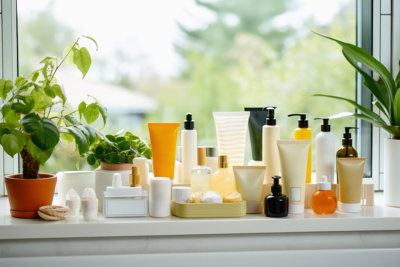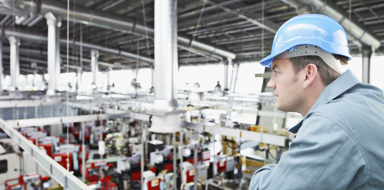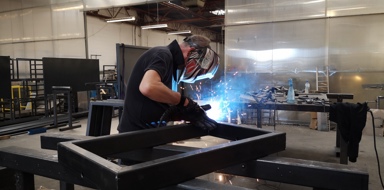
Home and personal care products need to be kept free from microbial contamination, but current testing methods slow down the supply chain. A project is exploring how sophisticated sensors could be used to detect microbes inline and in real time.
Protecting home and personal care products, such as shampoos and washing-up liquids, from microbial contamination is a key challenge for manufacturers. A build-up of microbes can create manufacturing problems, requiring cleaning and sanitisation of the equipment, or even pose a risk to consumers, leading to expensive product recalls.
Innovation Case Study - ArgusTo help ensure only ‘ft for purpose’ products make it to the supermarket shelf, stringent checks are in place, with samples taken at each stage of the supply chain for testing.
“The issue is that the current microbiology-based tests involve a very slow and laborious process – samples can sit in an incubator for up to three days,” explains Andrew Dorset, Senior Director for Quality Innovation at consumer goods multinational Procter & Gamble (P&G).
“It means a lot of product – and therefore money – is tied up waiting to see whether any microbial contamination has grown on an agar plate or whether it is safe to continue to the next stage of the process.”
With £248,000 of funding from the Made Smarter Innovation challenge, P&G led the ARGUS project, which investigated how digital technology could be used to test in real-time and without stalling the product on its journey through the supply chain.
Like the giant in Greek mythology after which it was named, ARGUS has many ‘eyes’ – in this case, the very latest in optical sensor technology from University of York. Using the supply chain of the well-known Fairy Liquid brand as a case study, with one of its raw materials supplier Libra Speciality Chemicals, the project explored how sensors could be deployed at key points to detect the build-up of microbes (bioflm) on surfaces or in fowing liquids. A digital platform prototype was developed to capture the data and provide real-time measurements.
“The technology can pinpoint any problems inline and as they occur, which enables more targeted interventions, whether that’s sanitising or shutting down that particular line,” says project lead Lucia Mendez-Mata, Senior Manager for Corporate Quality Assurance at P&G.
The technology has the potential to create around $1million of direct savings to the UK Fairy Liquid supply chain. Savings come through increased productivity and agility, as well as a reduction in inventory. There are also savings – both economic and environmental – in terms of a more targeted approach to cleaning.
“Currently, equipment is sanitised routinely with hot water. Knowing exactly where and when to clean could save energy and water,” says Mendez-Mata.
Home and personal care products need to be kept free from microbial contamination, but current testing methods slow down the supply chain. A project is exploring how sophisticated sensors could be used to detect microbes inline and in real time
Such instantaneous measures of material quality and supply chain health could combine to create digital Certifcates of Analysis, which would be of beneft to manufacturers within Fast Moving Consumer Goods (FMCG), as well as other industries.
As part of the project, an innovation advisory board was created, including members from paints and coatings, biofuels, food and beverages, and agricultural products industries.
“This innovation is very relevant to our FMCG liquids businesses, but it has potential application across many other UK supply chains,” says Dorset.
“We are already working on ARGUS II, which takes the proof of concept trials from the feasibility study lab pilots to real factories – but there is scope for this to be scaled up further and create a whole new, highly-skilled sector for this technology across a range of industries.





